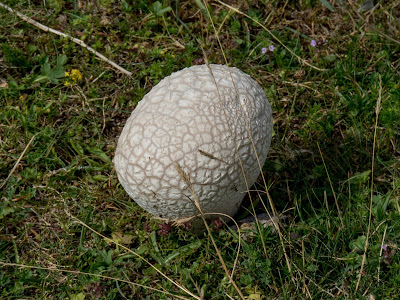The Coniston fells are to the north, the Isle of Man out to the west, across the Irish Sea.
A Kestrel hovers, looking for a meal, while a young Goldfinch poses for a quick photo.
 Ragwort, although toxic to some animals such as horses, is extremely beneficial to more than 150 species of insect including bees and butterflies, providing a very important source of nectar and pollen. The orange and black stripey caterpillars of the Cinnabar Moth can usually be spotted in huge numbers on this plant, although there seem to be far fewer nowadays than I recall seeing as a child.
Ragwort, although toxic to some animals such as horses, is extremely beneficial to more than 150 species of insect including bees and butterflies, providing a very important source of nectar and pollen. The orange and black stripey caterpillars of the Cinnabar Moth can usually be spotted in huge numbers on this plant, although there seem to be far fewer nowadays than I recall seeing as a child. 
Harebells, Birdsfoot Trefoil, Red Clover, Thistle and Meadow Vetchling are amongst many wildflowers which grow in abundance on the reserve.
The former industries of sand and gravel extraction have left behind deep holes which have since become permanent ponds and important habitats in their own right.
Black Combe in the distance.
This reserve, along with several others in Cumbria, is home to the rare Natterjack Toad. I don't think this little fella was a Natterjack, but I think he was a toad of some description rather than a frog. He could certainly move fast, hence the blurry photo!
Wild Thyme, Rosebay Willowherb and Yarrow provide yet more nectar for many bees and butterflies, including the Gatekeeper, Common Blue and Small Copper.


Dragonflies and Damselflies are also here in abundance, taking advantage of the midgies and mosquitos around the ponds.
I think these are a Common Darter and a Southern Damselfly, but I'm not an expert and therefore not 100% certain.
A Swan family with four Cygnets came to see if we'd brought them anything to eat; they were disappointed on this occasion.
 |
| Walney Geranium |
 |
| Sea Holly |
 |
| Puffball Fungus |
 |
| Fledgling Stonechat |
Ubiquitous wind turbines on Kirkby Moor and many more on the horizon. Love them or hate them; there's no escaping them.
 |
| Burdock |
 |
| Fox Moth Caterpillar |

 |
| A Curlew going home to roost |
 |
| Hobbit House? |
 |
| Overtaken by the tide |
 |
| Beach Fungi |
Perfect.
Thanks for visiting my blog. I hope you've enjoyed the photos.




























































.jpg)

